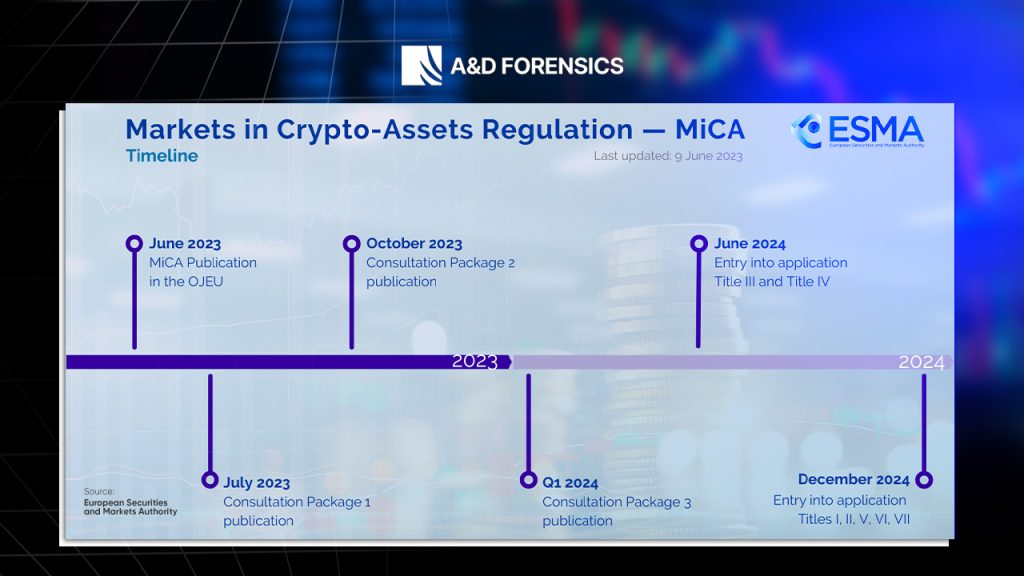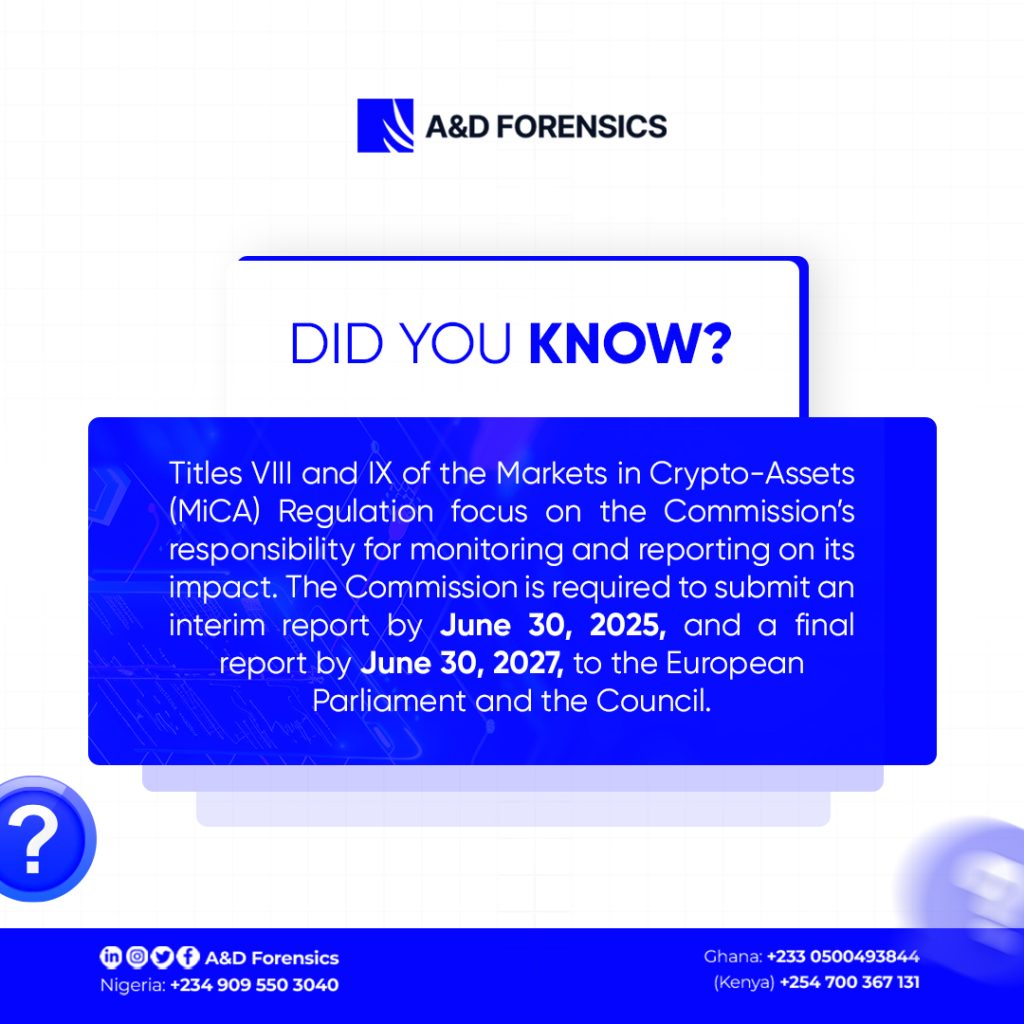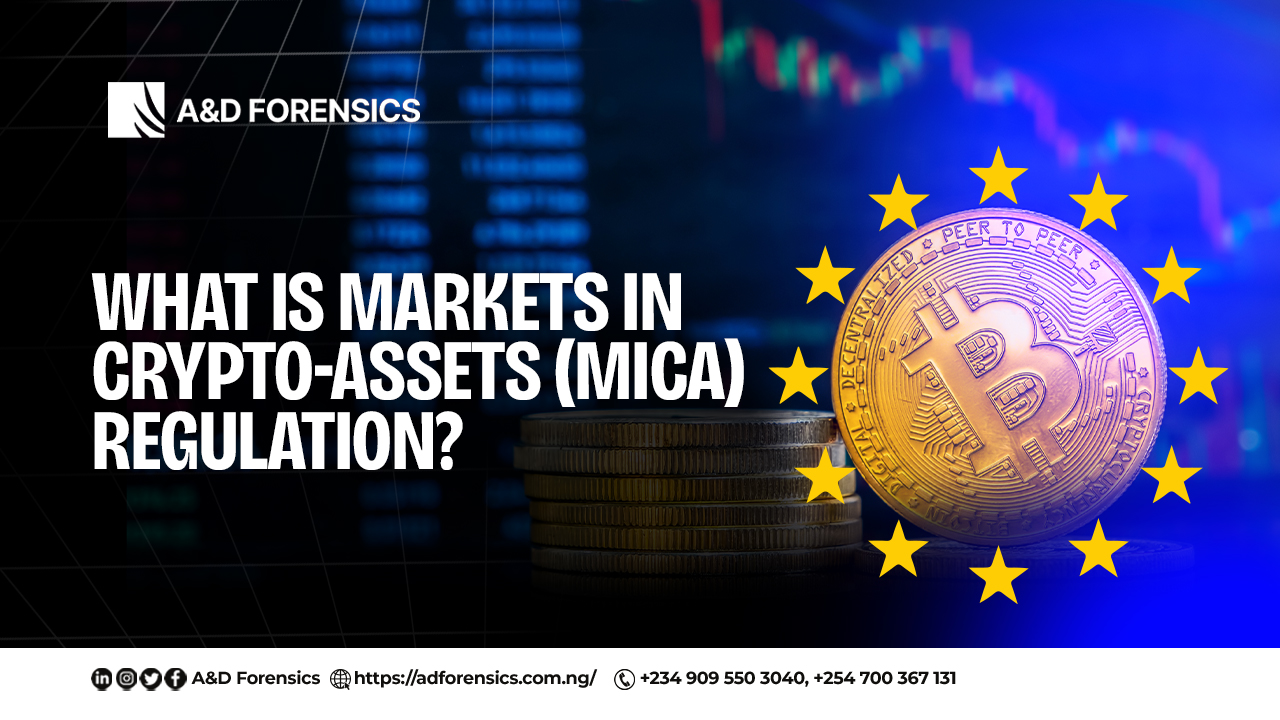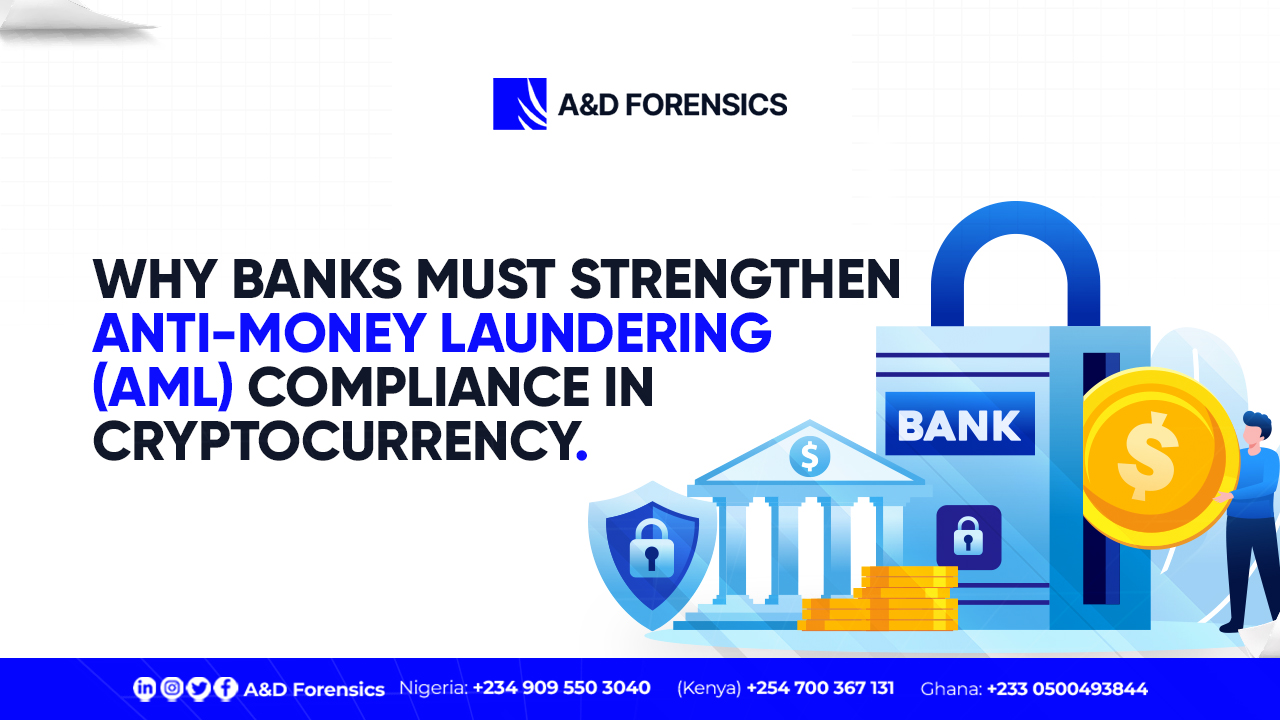Markets in Crypto-Assets (MiCA) Regulation is a response to the rapid growth of the cryptocurrency industry, which has brought both innovation and regulatory challenges. To address this evolving digital asset landscape, the European Union introduced MiCA as a groundbreaking legal framework designed to enhance transparency, protect investors, and ensure financial stability in the crypto market.
Understanding Markets in Crypto-Assets (MiCA) Regulation.
Markets in Crypto-Assets (MiCA) Regulation is a comprehensive legal framework introduced by the European Commission as part of the broader Digital Finance Package. It was officially adopted by the European Parliament in April 2023 and was fully implemented between 2024 and 2025. MiCA is designed to regulate crypto-assets, crypto-assets service providers (CASPs), and stablecoins across the European Economic Area (EEA), providing clarity and legal certainty for market participants.
On June 30, 2024, Titles III and IV became applicable (enforceable), while the remaining five titles (I, II, V, VI, and VII) took effect in December 2024. Titles VIII and IX address delegated acts, as well as transitional and final provisions, which do not require public feedback or adjustments.

What Are the Titles of the Markets in Crypto-Assets (MiCA) Regulation?
The Markets in Crypto-Assets (MiCA) Regulation consists of seven titles that outline jurisdictional responsibilities, authorization requirements, minimum standards for providers, and crypto-asset regulation.
Markets in Crypto-Assets (MiCA) Regulation: Title I, II and III
- Title I establishes the regulatory framework for publicly offered crypto-assets, defining trading platform requirements, applicable entities, and key terms such as distributed ledger technology, utility tokens, and consensus mechanisms.
- Title II outlines the conditions for creating and offering crypto-assets that do not qualify as asset-referenced tokens or e-money tokens. Issuers must be legal entities, publish a whitepaper and marketing materials, notify relevant authorities, and comply with additional requirements. Exceptions apply to free token distributions and certain utility tokens.
- Title III regulates asset-referenced tokens, which derive value from other assets, including fiat currencies. Issuers must be legal entities and comply with specific credit institution requirements.
Markets in Crypto-Assets (MiCA) Regulation: Title IV, V and VI
- Title IV governs e-money tokens (EMTs), which are pegged to official currencies. Issuers must be authorized as credit or electronic money institutions, submit a whitepaper, and notify regulators in advance. It also prohibits anonymous EMT trading to prevent money laundering.
- Title V details who can provide crypto services in the EU and allows for cross-border operations within member states. Providers must adhere to security and governance standards to safeguard consumers.
- Title VI addresses market abuse by banning insider trading, unlawful disclosure, and market manipulation (like wash trading), applying to both centralized and decentralized platforms.
Markets in Crypto-Assets (MiCA) Regulation: Title VII
Title VII outlines the cooperation between EU regulators to manage the crypto asset market. It establishes a system where national authorities (NCAs) in each EU country work with EU bodies like the European Banking Authority (EBA) and European Securities and Markets Authority (ESMA) for effective oversight.

Categories of Crypto Asset by Markets in Crypto-Assets (MiCA) Regulation.
The regulation categorizes crypto-assets into three types:
- Asset-referenced tokens (ARTs)
- E-money tokens (EMTs)
- Other crypto-assets that do not fall under the first two categories.
Exclusions from Markets in Crypto-Assets (MiCA) Regulation.
One interesting aspect of MiCA is that certain blockchain-related assets are excluded from being classified as crypto-assets under its definitions. The following crypto assets are excluded from MiCA’s scope:
- Crypto assets classified as financial instruments
- Assets qualifying as deposits or structured deposits
- Assets that qualify as funds
- Assets qualifying as securitization positions
- Crypto assets classified as non-life or life insurance policies
- Pension products and social security schemes
- Non-fractionalized non-fungible tokens
- Transactions between certain public entities and groups
- Central Bank Digital Currencies (CBDCs)
- Non-transferable digital assets
How Africa Gets Affected by Markets in Crypto-Assets (MiCA) Regulation.
Although Markets in Crypto-Assets (MiCA) Regulation primarily targets the European market, its influence extends beyond the EU, impacting global crypto businesses, including those in Africa. Key ways in which African crypto firms and users may be affected include:
- Compliance Requirements – African crypto firms engaging with European customers or exchanges may need to comply with Markets in Crypto-Assets (MiCA) Regulation to continue operating in the EU market.
- Stablecoin Issuance – African businesses relying on stablecoins for cross-border transactions may need to adjust to MiCA’s stricter reserve and issuance rules.
- Investor Confidence – The regulation can increase trust in crypto investments, attracting more European investors into African digital asset markets.
- Regulatory Precedent – Markets in Crypto-Assets (MiCA) Regulation could serve as a model for African regulators looking to introduce similar frameworks for crypto oversight.
Conclusion
Markets in Crypto-Assets (MiCA) Regulation establishes a comprehensive framework for crypto regulation in the EU, enhancing transparency, investor protection, and market stability. While primarily affecting the European market, its influence extends globally, impacting crypto businesses in Africa and beyond. Compliance with MiCA will be crucial for firms engaging with the EU market, shaping the future of crypto regulation worldwide.
How Can A&D Forensics Assist with Crypto Compliance?
A&D Forensics provides expert guidance and crypto compliance solutions to help businesses navigate the evolving regulatory landscape, including MiCA compliance.
Are you fully compliant with Markets in Crypto-Assets (MiCA) Regulation?
Contact A&D Forensics, your trusted expert in crypto compliance and forensic investigations.
Contributor: Ibrahim Anuoluwapo Azeez






